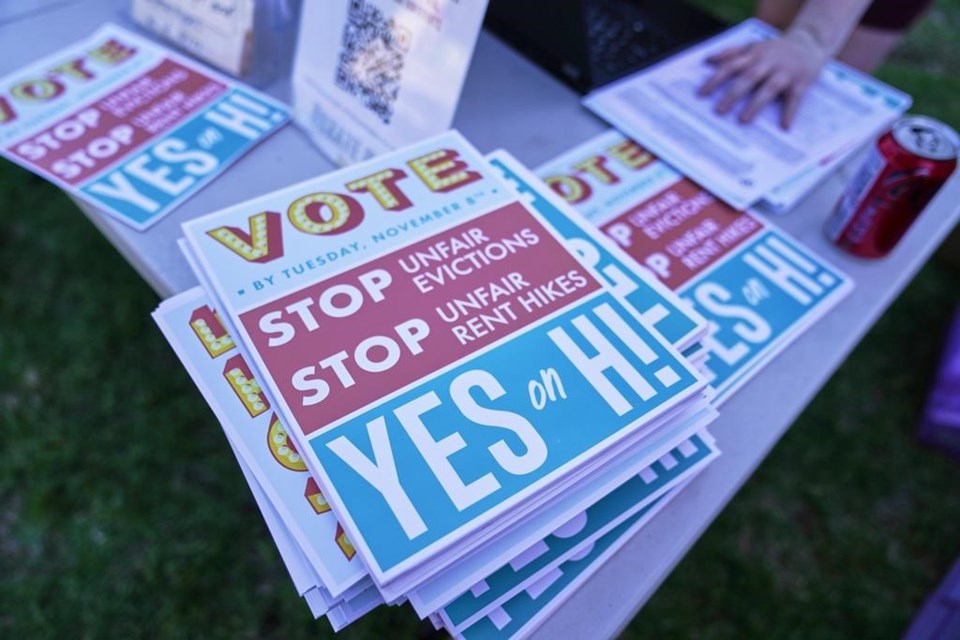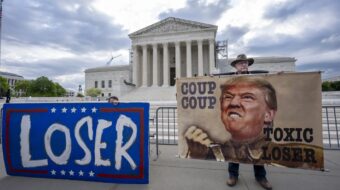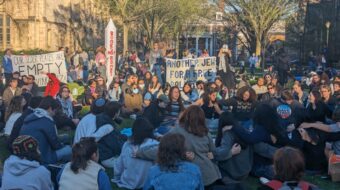
LOS ANGELES—California voters generally held to their left-liberal-progressive bent on November 8 when they marked their ballots for various statewide propositions and measures.
Proposition 1, affirming the state constitutional right to reproductive freedom, came in with a resounding Yes. California voters joined others in Kentucky, Michigan, and Vermont who also opted to protect abortion access in their states, a win in 100% of the elections where this issue was on the ballot, truly a seismic win for reproductive rights.
Many, no doubt, were energized by the Supreme Court’s ruling earlier this year nullifying Roe v. Wade and tossing the issue back to the states. Voters have spoken, and they have made it clear what they believe: Abortion is an essential part of healthcare.
Proposition 26, concerning in-person sports betting in tribal casinos, was defeated handily. If passed, it threatened to further depress unionization in the casino sector and put as many as 32,000 people out of a job, leading to a loss of $1.6 billion in wages.
Proposition 27 would have allowed online sports betting. This was defeated by an even higher margin than Prop 26. It may be premature, though it is tempting to conclude that voters are getting more sensitized to the perils of gambling addiction and are becoming more resistant to expanding the venues and opportunities for people to throw their money away.
Proposition 28, providing additional funding for arts and music education in public schools K-12, passed by a healthy margin. California (hypothesizing the state as a national economy) is currently ranked at 4th, or very close to 4th, in world GDP, edging out the whole country of Germany, behind only the U.S., China, and Japan. Voters are clearly stating their opinion that arts and music education help to make for a better, more productive, and educated society.
Proposition 29 would have required the presence of an on-site licensed medical professional at kidney dialysis clinics during treatment and that clinics had to disclose physicians’ ownership interests and report infection data. This was the third time, after 2018 and 2020, this proposition had come before voters.
The union movement supported it as a means to boost employment, but also to ensure that the highest protection for patients was on-site in case of any emergency. The medical establishment and the owners of these profitable clinics fiercely opposed Prop 29 because it would have meant hiring more staff and revealing ownership. They spent furiously to defeat it, and were successful. It went down by greater than 2 to 1.
Proposition 30 would have imposed an additional 1.75% in personal income tax on California residents with annual earnings above $2 million. The additional income raised would have gone to create purchase incentives for zero-emission vehicles and more vehicle charging stations. Among its biggest supporters was Lyft, because by 2030, Uber and Lyft drivers must log 90% of their miles in electric vehicles, so state incentives would help their drivers acquire such cars. Prop 30 could be supported for environmental reasons, but its opponents attacked it for passing a new income tax on Californians, without making it clear that it applied only to the most wealthy. This item failed by an approximate 4 to 6 vote.
Proposition 31, prohibiting retail sale of flavored tobacco products (that appeal largely to young people of color), passed almost 2 to 1. Voters clearly understood that it was needed to combat the powerful tobacco industry which, as older smokers die off (many of cancer and other diseases attributable to this habit), is forever inventing new strategies for addicting younger ones.
L.A. County Measure A would grant the Board of Supervisors authority to remove an elected Sheriff from office for cause. This measure was prompted by the shocking behavior of the current L.A. County Sheriff, Alex Villanueva (who lost his bid for re-election), and it passed by greater than 2 to 1 as a strong rebuke to the department’s overreach.
L.A. County Measure C on revenue and finance of the cannabis industry passed by approximately 6 to 4. Cannabis, as a new aboveground industry, though not entirely legitimated insofar as it is still restricted from many banking services, is an evolving sector of the economy, parts of which are beyond control by government agency. This measure was designed to bring the industry under a modicum of supervision and regulation, and this appealed to voters.
City of L.A. Measure LH, authorizing public entities in the City of L.A. to develop, construct, or acquire up to 5,000 additional units of low-income rental housing in each Council District to address homelessness and affordable housing needs, passed by 2 to 1. Voters have repeatedly indicated their desire to see the homelessness crisis resolved fairly and humanely, but have often been disappointed that previous measures have not produced much by way of results. Still, the voters are ever hopeful and supportive of whatever might help, and they approved this measure gladly.
City of L.A. Measure SP would have provided funding for parks, recreational centers, pools, playgrounds, waterways, beaches, green spaces, open spaces, childcare, and other facilities, increasing park equity in the city through a tax of $0.08414 per square foot on improved parcels (including private homes), for 30 years. Despite labor support for it, developers and business property associations opposed it, as even a modest homeowner would have seen their tax go up by anywhere from a couple of hundred dollars. Most Angelenos are renters, of course, but the opposition appeal was directed at them too on the theory that as property owners’ taxes increased, so would rents. This measure was defeated by about 2 to 1.
City of L.A. Measure ULA passed by a healthy margin, 56.38% to 43.62%. It will fund and authorize affordable housing programs and resources for tenants at risk of homelessness through a 4% tax on sales/transfers of real property exceeding $5 million, and 5.5% on properties of $10 million or more. Progressives were united on a yes vote for it, but property owner associations militated against it for obvious reasons. Because the starting point for such an additional tax was sales above $5 million, most voters would be personally unaffected and were happy to welcome a small opportunity to tax the very rich for the public good.












Comments